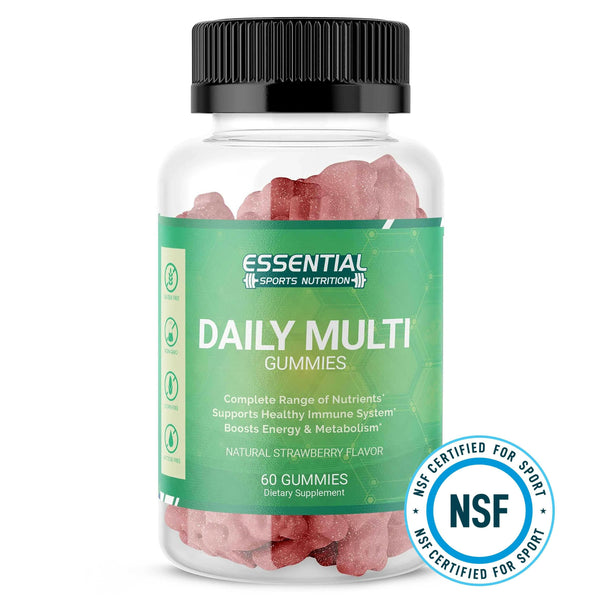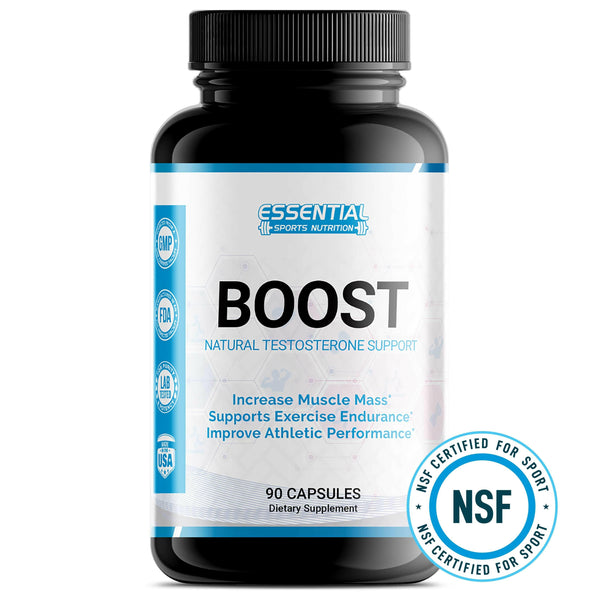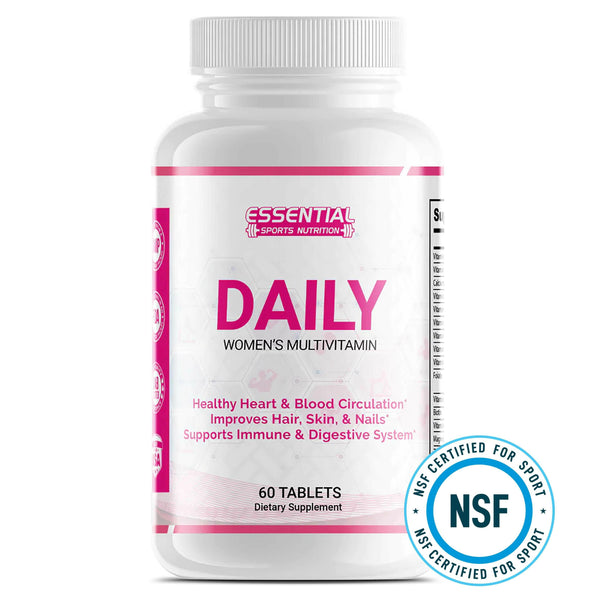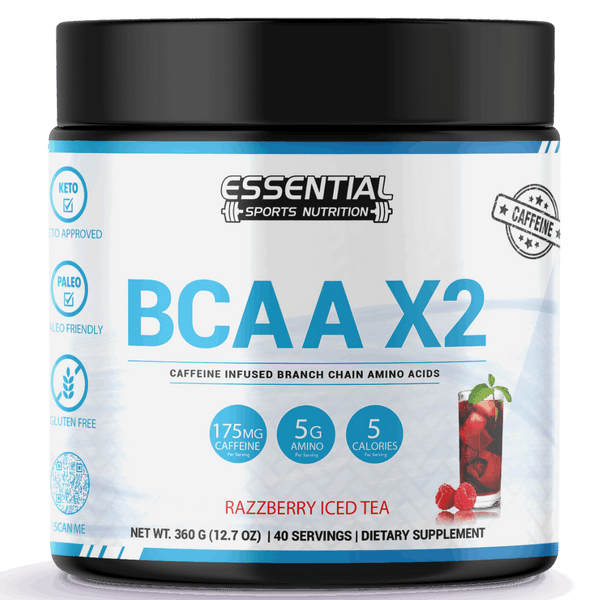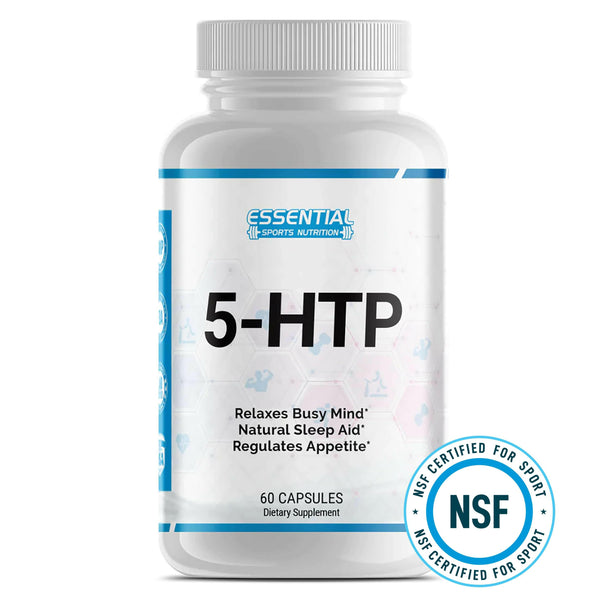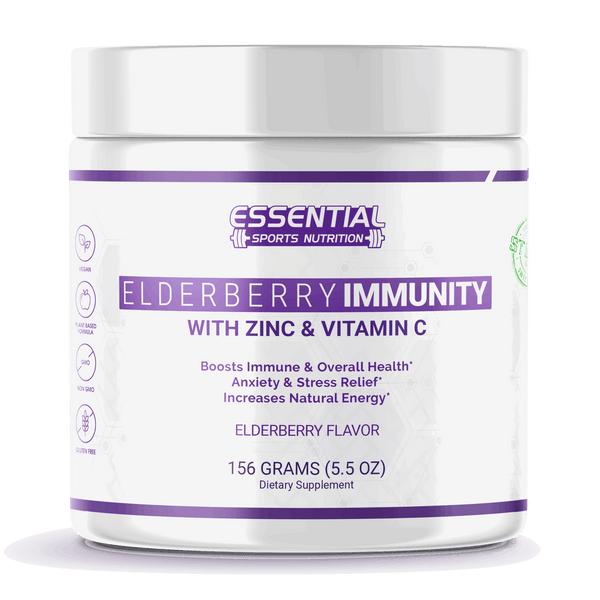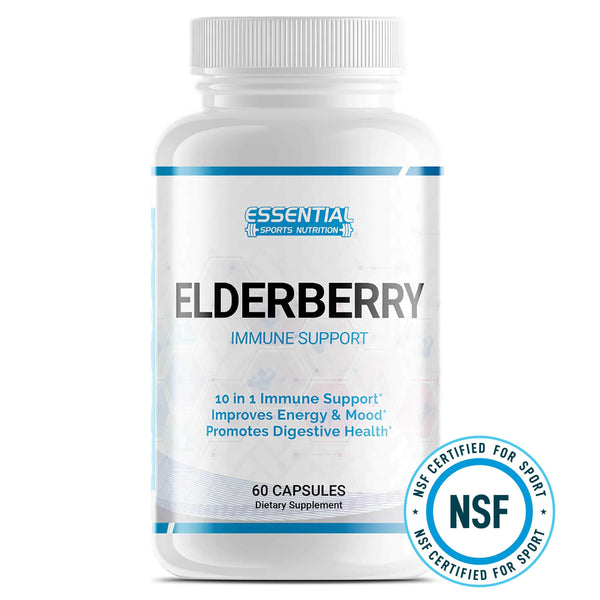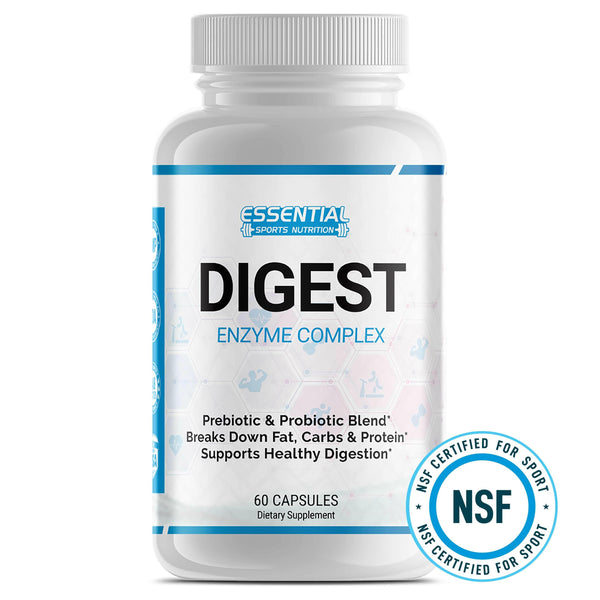Bodyweight Exercises for Shoulders: Build Great Shoulders Without Equipment
Many people want strong and well-defined shoulders but think they need a gym or fancy equipment to achieve them. This common belief can make it hard for those working out at home or without access to weights.
A surprising fact is that you don't always need weights to build those shoulder muscles effectively.
Bodyweight exercises are a fantastic way to enhance shoulder strength, stability, and posture, all from the comfort of your own space. This article offers a comprehensive guide on how bodyweight movements can target your shoulder areas, whether you're just starting out or already have some experience with fitness routines.
We'll cover exercises from beginner-friendly options like Incline Push-ups to more advanced moves such as Pike Push-ups. Get ready for stronger shoulders ahead!

Key Takeaways
Bodyweight exercises can make your shoulders strong without weights. They are safe and improve posture, balance, and overall fitness.
Start with simple moves like push-ups and then try more challenging ones to build shoulder strength through progressive overload.
Avoid common mistakes such as skipping warm-ups and doing exercises too quickly to prevent injuries and get the most out of your workouts.
Exercises that target different parts of the shoulders help prevent muscle imbalance. Include exercises for your rear delts to keep everything balanced.
Warm up before workouts, use the correct form, and increase exercise difficulty gradually to safely boost shoulder strength.
Importance of Strong Shoulder Muscles
Strong shoulders are key for any upper body exercise. They help in movements like push-ups and handstand push-ups. With strong shoulder muscles, you can improve your posture and keep your body aligned.
This means fewer injuries in other parts of your body.
The muscles around the shoulder joint support good health there. People often don't train these muscles enough, making them weak. Strengthening them helps avoid pain and keeps the shoulders working well.
Exercises that focus on these areas are crucial for keeping everything balanced and strong.
Shoulder Anatomy: Deltoids and Rotator Cuff

The shoulder has many muscles that let you move your arm in different ways. Four main muscles, called the rotator cuff, are super important. They include the supraspinatus, infraspinatus, teres minor, and subscapularis.
These muscles wrap around the shoulder joint and help lift and rotate your arm. They also keep your upper arm bone snug in the shoulder socket. This keeps your arm stable when you do things like push-ups or reach up high.
Besides the rotator cuff, there are other muscles too. The deltoid muscle covers your shoulder and is made of three parts: anterior deltoid at the front, lateral deltoid on the side, and rear deltoid at the back.
These parts work together to allow you to raise your arm out to the side, frontward, or backward. Strong shoulders depend a lot on these muscles working well together. Keeping them strong helps with lots of activities and protects against injuries.
Beginner Bodyweight Shoulder Exercises: Starting Building Your Shoulders
Kickstart your journey to stronger shoulders with simple moves you can do anywhere. Explore these exercises to build a solid foundation for your upper body.
Prone I to Y
Prone I to Y is a simple yet effective exercise for your shoulder muscles. You start by lying face down, maybe on the floor or a mat. Your body forms a straight line from your heels to your head.
Lift your arms slowly above you, making an "I" shape, then open them wider into a "Y" shape. This movement squeezes your shoulder blades together and lifts up your limbs without any equipment.
This workout not only strengthens the upper part of your body but also helps with posture and can keep injuries away. As you move between the "I" and "Y," imagine drawing invisible lines in the air.
Keep repeating this motion gently; it's a pain-free way to build muscle strength around your shoulders and upper back, ensuring all motions are smooth without jerking movements.
Incline Push-ups
Incline push-ups are a fantastic exercise for those just starting their fitness journey. This workout helps build strength in the chest and shoulders while keeping the elbows safe from too much stress.
To do an incline push-up, you need to find a stable surface like a bench or steps where you can place your hands. Your body should form a straight line from your head to your heels, braced with core engagement.
As you lower your chest towards the surface, keep your elbows at a slight angle.
This version of push-ups is easier than traditional ones since it targets the lower part of the chest more gently. It also works out the deltoids (shoulders) and triceps (back of arms), helping in upper body strengthening without needing weights.
Beginners will find this variation helpful as it teaches proper form that applies to other exercises such as regular push-ups and presses up movements.
Mountain Climbers
Mountain climbers are a dynamic move you can do anywhere without any equipment. This exercise fires up many muscle groups, giving your body a full workout. It not only strengthens your chest, shoulders, and arm muscles but also boosts your core and legs.
You start in a push-up position and quickly switch your feet back and forth as if running in place. Each step pumps up your heart rate, adding cardio kick to the strength training.
This exercise is great for building core stability too. As you pull each knee into your chest, you're challenging your balance and coordination. Your abs work hard to keep you steady while moving fast.
Mountain climbers are also fantastic for burning fat throughout the entire body and improving agility. With regular practice, they can enhance upper body power significantly by targeting crucial areas like the pectorals major muscles and deltoids.
Intermediate Bodyweight Shoulder Exercises to Try
Leveling up to intermediate bodyweight exercises for shoulders brings new challenges and gains. These workouts push your muscles with tougher moves that target different parts of the shoulders, helping you build strength and flexibility.
Plank to Downward Dog
The Plank to Downward Dog exercise is a powerful move that works your upper body, abs, backside muscles, and leg muscles. It also gives your hamstrings and back a good stretch. Starting in a plank position with your arms straight and hands under shoulders, push up into the Downward Dog pose by lifting hips high and pressing heels down. Then, return to the starting position and repeat.
This move not only strengthens chest muscles, shoulder muscles, and triceps but also the shoulder girdle by stretching the entire back of the body.
This exercise has many benefits like building muscle strength, burning fat, preventing injuries to the deltoids or humerus bone areas,and enhancing overall fitness levels without using any weights.
By transitioning from Plank to Downward Dog you fire up more than just deltoids; pectorals and rectus abdominis get involved too. Keeping these facts in mind helps ensure this exercise will effectively enhance your workout routine by using nothing more than your own body weight as resistance.
Plank to Alternating Pike
Starting in a plank position tests your balance and core strength right away. Your palms press firmly into the ground, holding up your body. Then, you lift one hand off the floor and reach towards the opposite foot, entering a pike movement.
This action not only works out your shoulders but also gives your core a good challenge. You shift back to plank and repeat on the other side.
This exercise is unique because it combines core strengthening with shoulder stability work without needing any equipment. Each move from plank to pike and back requires focus and coordination, making both your mind and muscles engage deeply.
It fits well for those at beginner or intermediate levels looking to strengthen their deltoid muscles alongside their abs without heading to a gym.
Elbow to High Plank
Elbow to High Plank is a great workout for making your shoulders, triceps, and biceps stronger. You start on the ground in a plank position with your forearms. Then, push up one arm at a time until you are in a high plank where your arms are straight.
This move not only improves fitness but also builds muscle in the upper body.
This exercise requires no equipment and can make a big difference in how strong and fit your upper body gets. It's perfect for those who want to increase their health-related physical fitness without going to the gym.
Practicing Elbow to High Plank regularly helps build strength pretty efficiently.
Advanced Bodyweight Shoulder Exercises and Workout Plans
For those ready to challenge their shoulders, advanced bodyweight moves await. These exercises push your muscles harder, using only the weight of your body for resistance.
Pike Push-up
Pike push-ups are a powerful way to make your shoulders strong. They mainly focus on the upper body, putting your deltoids in the spotlight. To do them, start in a downward dog pose.
Your hips should be high and your feet close together. Then bend your elbows and lower your head towards the ground and press back up.
This move helps build bigger shoulders using only body weight. It sets a solid base for more challenging exercises like pike handstand push-ups. These are similar but add an extra twist for even more strength building in the shoulders.
Side Plank with Leg Raises
To do a side plank with leg raises, start by lying on your side. Keep your feet stacked and lift your body up on one elbow. Your body should form a straight line from head to heels.
Now, raise your top leg as high as you can, then lower it back down without letting it touch the bottom leg. This targets not just your shoulders but also hits the obliques, glutes, and back hard.
This exercise turns up the intensity for abdominal muscles more than regular planks by adding motion through leg raises. It's an excellent choice for those looking to strengthen their core while engaging multiple muscle groups at once, including the anterior deltoids and posterior deltoids in the shoulders.
Keeping good form is crucial; make sure to keep hips lifted and abs tight throughout each rep.
Triceps Dips
Triceps dips are a powerful exercise for building arm and shoulder muscle. They target the triceps, shoulders, and even your chest. You can do them almost anywhere—all you need is a sturdy surface.
Start by sitting on the edge of a chair or bench. Slide off so only your hands are still on it, then lower and lift your body using your arms.
Doing this move strengthens not just your triceps but also helps in making your shoulders and chest stronger. To focus more on the chest, just tilt forward slightly as you dip down.
This makes triceps dips an adaptable workout for different muscles in your upper body. Since they build size, strength, and power in the triceps, they're great for anyone looking to boost their upper body fitness without weights.
Why Bodyweight Exercises are Effective for Shoulders
Bodyweight exercises work well for shoulders because they use gravity and your own body's weight to build muscle. They make your shoulders strong without needing heavy weights. This helps prevent injuries and improves posture, mobility, and overall fitness.
Moves like push-ups and planks target the rear deltoids, lateral deltoids, and serratus anterior muscles in your shoulders.
Using bodyweight routines increases endurance, flexibility, and strength in your shoulders. These exercises also give you a cardio workout by raising your heart rate as you move through different positions that challenge your shoulder muscles from various angles.
You end up strengthening not just the shoulder but also enhancing neck stability and preventing shoulder impingement issues commonly seen with lifting heavy objects.
Tips to Avoid Shoulder Injuries during Shoulder Workouts at Home
To keep your shoulders safe during exercise, it's crucial to follow some key tips. These pointers not only help prevent injuries but also ensure you get the most out of your workouts.
Warm up properly before starting: Warming up increases blood flow to your muscles, making them more flexible. Simple arm circles or dynamic stretches can prepare your shoulders for more intense movements.
Use a thick handle when pressing: Switching to a thicker bar or adding fat gripz makes the muscles in your hands and forearms work harder. This change can take some pressure off your shoulders.
Limit explosive overhead movements: Fast, powerful lifts above your head can strain your shoulder joints. Keeping such exercises to a minimum reduces the risk of hurting yourself.
Scale back on how much you press overhead: Doing fewer overhead presses helps avoid overload on your shoulder joints. It's better to focus on building strength slowly and safely.
Stretch after strengthening: Stretching the muscles you've just worked on is vital for restoring their length and preventing tightness. This step is especially important for muscles around the shoulders.
Focus on bodyweight exercises first: Master exercises like push-ups before moving on to weights. This approach helps build a strong foundation so that your shoulders are less likely to get injured later.
Improve shoulder flexibility and mobility: Exercises that increase how well your shoulder moves can help prevent injuries by ensuring your joints move freely and aren't stiff.
Exercise with moderation and correct technique: Avoid going too hard too soon, especially if you're new to working out or trying a new movement. Learning the right way to do an exercise is just as important as doing it.
How to Increase Shoulder Strength with Progressive Overload
To build stronger shoulders, start with lighter exercises and slowly add more challenge. This method is called progressive overload. It means you gradually increase the weight or resistance your muscles face.
First, focus on mastering simple moves like push-ups or shoulder taps. As these become easy, move onto harder ones such as pike push-ups or wall walks.
Adding more reps is another way to boost shoulder strength. Begin with a few repetitions of an exercise and work your way up over time. Also, mix in different kinds of movements that target various parts of your shoulders - from front to rear delts and everything in between.
Using a range of motions helps improve muscle growth and definition without hurting your joints. Keep the progress steady but challenging for the best results.
Common Mistakes in Bodyweight Shoulder Exercises

Bodyweight shoulder exercises can be tricky. Many people make mistakes that can lead to little progress or even injury. Here are the common slip-ups and how to fix them:
Skipping Warm-Ups: Jumping into workouts without dynamic stretching can stiffen your shoulders. Start with arm circles or light push-ups to get blood flowing.
Overdoing Front Shoulders: People often overwork their pectoralis major and neglect their teres minor muscles in the back. Balance your routine by adding moves like reverse flys.
Ignoring Pain: Pushing through shoulder pain is a bad idea. If you feel discomfort, stop and check your form or take a break.
Using Wrong Form: Incorrect posture during exercises like push-ups can strain your rotator cuff muscles. Keep your body straight and engage your core.
Stopping at Plateaus: Not increasing difficulty leads to a halt in progress. Add more reps or try advanced versions of exercises once you're comfortable.
Ego Lifting: Avoid the urge to perform extreme workouts beyond your level just for show, which can cause injuries.
Forgetting Progressive Overload: Slowly increase the challenge of your workouts to build strength. Use variations of standard moves for a tougher session.
Neglecting Full Range of Motion: Halfway lifts won’t fully engage your deltoids or improve flexibility.
Skipping Rear Delt Workouts: Focusing only on front and side delts leaves out important muscles at the back of your shoulders, leading to imbalance.
Rushing Exercises: Fast movements reduce effectiveness and increase risk of harm. Take it slow, focusing on each muscle contraction.
Conclusion

Strong shoulders matter for your posture and overall strength. We've shown you easy-to-follow exercises that don't need equipment, from basics to tough challenges. Ask yourself, how can I fit these into my daily routine? Remember, strengthening your shoulders can lead to better health and fitness. It's time to get moving and make those shoulder muscles stronger today!
Bodyweight Shoulder Workout FAQs
Q: What are the best bodyweight exercises for shoulders?
A: Push-ups, inverted rows, and bear crawls are great for strengthening your shoulders. They work on different parts of your shoulder like the front delts, middle delts, and even help with shoulder extension. A: Bodyweight exercises for shoulders are strength training movements that target the shoulder muscles using only the individual's body weight as resistance.
Q: Can I do shoulder workouts at home without equipment?
A: Yes! Exercises such as push-ups and decline push-ups target your shoulders effectively without needing any gym equipment.
Q: How do bodyweight exercises protect against rotator cuff injuries?
A: Bodyweight exercises like external rotation and lateral rotation movements strengthen the muscles around your glenohumeral joint. This helps in preventing rotator cuff injuries by making your shoulders stronger.
Q: Are there exercises that focus on my medial deltoid?
A: Absolutely! Lateral raises through abduction movements specifically target your medial deltoid, helping to build broader shoulders.
Q: How often should I include shoulder exercises in my workout routine?
A: Incorporating shoulder-focused bodyweight exercises 2-3 times a week allows adequate rest while ensuring consistent strength building in these areas.
Q: Do these exercises also benefit other parts of my body?
A: Indeed! Many shoulder exercises are compound movements that engage multiple muscle groups including biceps muscles, contributing to overall upper-body strength.
Q: How can I do a bodyweight shoulder workout at home?
A: You can do a bodyweight shoulder workout at home by performing exercises like shoulder taps, handstand push-ups, pike push-ups, and other movements that target the shoulders without the need for equipment.
Q: What are the benefits of bodyweight shoulder exercises?
A: Bodyweight shoulder exercises help in building shoulder strength, improving shoulder stability, enhancing shoulder mobility, and can contribute to overall upper body strength.
Q: Can bodyweight shoulder exercises help in avoiding shoulder injuries?
A: Yes, incorporating bodyweight shoulder exercises into your workout routine can help in strengthening the shoulder muscles, which may reduce the risk of shoulder injuries.
Q: What are some advanced bodyweight shoulder exercises to try?
A: Advanced bodyweight shoulder exercises include handstand shoulder presses, pike push-ups with elevated feet, one-arm push-ups, and other challenging movements that target the shoulders.
Q: How do bodyweight shoulder exercises target different shoulder muscle groups?
A: Bodyweight shoulder exercises target different shoulder muscle groups such as the anterior deltoid, lateral deltoid, and posterior deltoid depending on the movement and range of motion involved.
Q: What is the importance of shoulder strength in bodyweight exercises?
A: Shoulder strength is crucial in bodyweight exercises as it supports movements like push-ups, handstands, and shoulder taps, and helps in maintaining proper form and stability during workouts.



